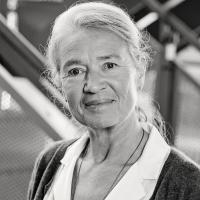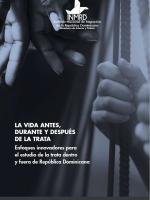La vida antes, durante y después de la trata - human trafficking in the Dominican Republic and beyond
As part of a 18 months cooperation agreement between the National Institute of Migration (INM-RD) in the Dominican Republic and the Danish Institute of International Studies (DIIS) on the topic of human trafficking, Head of Department Ninna Nyberg Sørensen presented her study “Life before, during, and after trafficking: new approaches to the study of human trafficking within and from the Dominican Republic” (original in Spanish) at a public event in Santo Domingo, March 4.
The report provides a State-of-the-Art summary of knowledge produced on human trafficking in the region, an analysis of the National Action Plan against Human Trafficking 2017-2020 and a discussion of themes and issues in need of more analysis. These include gender and intersectionality, human trafficking as an effect of stricter migration control, the need to understand human trafficking in the light of ‘migration gone terribly wrong’, the focus and limitations of existing information campaigns, issues related to available assistance to persons who have been trafficked beyond victimization, and persistent root causes such as debt and generalized insecurity that seriously questions ‘reintegration’ to life as it was before migration.
The main purpose of the report is to provide an analytical framework for ongoing and future studies of human trafficking. Final recommendations are therefore aimed at methodology and the direction future studies must take. The report suggests:
- Avoid replication: The experience of trafficked women to the sex industry is well covered. While it is important to include such experiences in any analysis, it is just as necessary to include other actors in future analysis. These not only include persons trafficked to other forms of forced labour, but also the variety of operating traffickers, as well as the state and non-state actors involved.
- Study a broader spectrum of actors: Many reports point to lack of coordination between state actors, and between state and non-state actors in attempts to combat human trafficking, but few studies approach the underlying causes and responsibility for coordination problems. More emphasis should be given to state and non-state actors, their modus operandi around human trafficking, and the effects of their efforts.
- Acknowledge the ’grey’ areas: Human trafficking is best analysed along a continuum with relatively free migration decisions and non-exploitative working conditions at one end and forced migration experiences towards exploitative labour conditions at the other end. Understanding human trafficking along a continuum of vulnerabilities and exploitations enables a betterg rasp of life before, during and after human trafficking.
DIIS Eksperter

